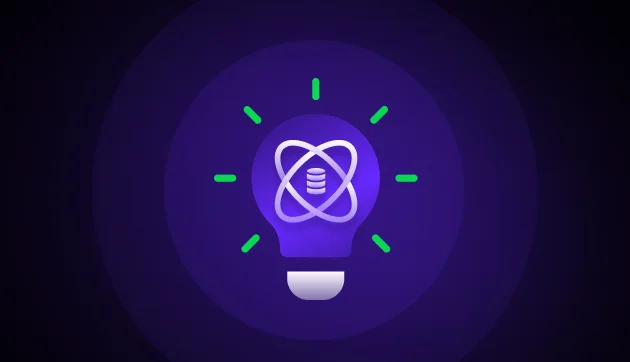
Top 10 Steps to Kickstart Your Career as a Machine Learning Engineer
Oct 22, 2024 6 Min Read 3661 Views
(Last Updated)
As businesses increasingly rely on data-driven insights to make informed decisions and derive solutions, the demand for skilled Machine Learning Engineers has skyrocketed.
If you have a passion for programming, a knack for problem-solving, and an interest in artificial intelligence, becoming a Machine Learning Engineer could be the perfect career for you.
In this guide, I will walk you through the step-by-step process of how to efficiently go about becoming a Machine Learning Engineer, from acquiring the necessary skills to landing your dream job.
Table of contents
- Understanding the Role of a Machine Learning Engineer
- The Roadmap to Becoming a Machine Learning Engineer
- Step 1: Master a Programming Language
- Step 2: Strengthen Your Mathematical Skills
- Step 3: Dive into Machine Learning Concepts
- Step 4: Gain Hands-on Experience with Projects
- Step 5: Master Data Science Tools
- Step 6: Master Data Manipulation and Visualization Libraries
- Step 7: Explore Deep Learning Techniques
- Step 8: Stay Updated and Engage with the Community
- Step 9: Craft an Impressive Resume
- Step 10: Ace the Job Interview
- Concluding Thoughts...
- FAQ
- How to become an ML engineer roadmap?
- How many years does it take to become a machine learning engineer?
- What should I major in to become a machine learning engineer?
- Which company pays the highest for ML engineers?
- Who is eligible for machine learning?
Understanding the Role of a Machine Learning Engineer

Before getting into the specifics, it’s important to grasp the essence of this role. A Machine Learning Engineer is a programmer who designs and develops systems that can learn with data and make predictions as well as decisions without explicit programming instructions.
Their ultimate goal is to create artificial intelligence systems that can analyze and interpret large amounts of data, identify patterns, and make accurate predictions that drive solutions.
The responsibilities of a Machine Learning Engineer encompass a wide range of tasks. From collecting and preprocessing data, selecting and implementing appropriate machine learning algorithms, to training and testing machine learning models, and fine-tuning those models for optimal performance and results.
Machine Learning Engineers also collaborate with data science teams to extract insights from data, choose suitable tools and frameworks, and stay updated with the latest advancements in the field.
Make sure you understand machine learning fundamentals like Python, SQL, deep learning, data cleaning, and cloud services before we explore them in the next section. You should consider joining GUVI’s Artificial Intelligence & Machine Learning Course, which covers tools like Pyspark API, Natural Language Processing, and many more and helps you get hands-on experience by building real-time projects.
Instead, if you would like to explore Python through a Self-paced course, try GUVI’s Python course.
The Roadmap to Becoming a Machine Learning Engineer

Now that we have a clear understanding of the role and responsibilities of a Machine Learning Engineer, let’s dive into the step-by-step process of how to kickstart your career in this field.
Step 1: Master a Programming Language
To embark on your journey as a Machine Learning Engineer, it is crucial to have a strong foundation in programming. While there are several programming languages used in the field of machine learning, Python has gained significant popularity due to its simplicity and versatility.
If you are a beginner, start by learning the basics of Python. Familiarize yourself with concepts such as variables, data types, loops, conditional statements, and functions. Online tutorials and courses can be valuable resources to kickstart your programming journey.
Once you have a solid grasp of Python, you can explore other programming languages commonly used in machine learning, such as R or Java.
However, it is important to note that Python is widely regarded as the go-to language for machine learning due to its extensive libraries and frameworks specifically designed for data analysis and machine learning.
Step 2: Strengthen Your Mathematical Skills
Mathematics forms the foundation of machine learning algorithms and models. To become a proficient Machine Learning Engineer, it is essential to have a strong understanding of key mathematical concepts.
Here are some mathematical topics that are particularly relevant to machine learning:
- Probability and Statistics: Probability theory and statistical analysis are crucial for understanding and evaluating machine learning algorithms. Concepts such as probability distributions, hypothesis testing, and statistical inference are essential for making informed decisions in machine learning.
- Linear Algebra: Linear algebra is the mathematical framework used to represent and manipulate data in machine learning algorithms. Concepts such as vectors, matrices, and matrix operations play a vital role in understanding and implementing machine learning algorithms.
- Calculus: Calculus is used to optimize machine learning models by minimizing or maximizing a given objective function. Concepts such as derivatives and gradients are fundamental to understanding optimization algorithms used in machine learning.
- Optimization: Optimization techniques are employed to fine-tune machine learning models and improve their performance. Understanding concepts such as gradient descent and convex optimization is crucial for optimizing machine learning algorithms.
Step 3: Dive into Machine Learning Concepts

Once you have a strong foundation in programming and mathematics, it’s time to delve into the exciting world of machine learning. Start by familiarizing yourself with the different types of machine learning algorithms, including supervised learning, unsupervised learning, semi-supervised learning, and reinforcement learning.
Supervised learning involves training a model using labeled data, where the input and the corresponding output are known. This type of learning is commonly used for tasks such as classification and regression.
Unsupervised learning, on the other hand, deals with unlabeled data and aims to find patterns or structures in the data. Clustering and dimensionality reduction are examples of unsupervised learning techniques.
Semi-supervised learning combines labeled and unlabeled data to improve the performance of machine learning models.
Reinforcement learning, inspired by behavioral psychology, focuses on training agents to make decisions based on trial and error.
Understanding the fundamentals of these different types of machine learning algorithms will provide you with a solid framework to build upon.
Step 4: Gain Hands-on Experience with Projects
To truly master machine learning, hands-on experience is paramount. Theory alone is not sufficient to become a skilled Machine Learning Engineer. It is essential to apply your knowledge to real-world projects and gain practical experience.
Start by working on small-scale projects that align with your interests. Kaggle, a popular platform for data science competitions, offers a wide range of datasets and problem statements to practice your skills. Additionally, consider contributing to open-source projects or participating in hackathons to collaborate with other aspiring machine-learning enthusiasts.
As you gain confidence and expertise, challenge yourself with more complex projects that involve larger datasets and cutting-edge machine-learning techniques. Not only will this help you develop a robust portfolio, but it will also showcase your ability to solve real-world problems using machine learning.
Step 5: Master Data Science Tools

In the field of machine learning, proficiency with data science tools is essential. These tools enable you to efficiently analyze, preprocess, and visualize data, ultimately facilitating the development of machine learning models.
Two widely used tools in the data science community are Jupyter and Anaconda. Jupyter notebooks provide an interactive environment for writing and executing code, making it easier to explore and present data.
Anaconda, on the other hand, is a distribution of Python and R packages that simplifies the installation and management of data science libraries and environments.
Take the time to familiarize yourself with these tools and their functionalities. Online tutorials and documentation can guide you through the installation and usage of Jupyter and Anaconda.
Step 6: Master Data Manipulation and Visualization Libraries
Data manipulation and visualization are integral components of the machine-learning workflow. To efficiently work with data, it is essential to master libraries such as pandas, NumPy, and Matplotlib.
Pandas is a powerful data analysis library that provides data structures and functions to manipulate and analyze structured data.
NumPy, on the other hand, is a fundamental library for numerical operations in Python, providing support for large, multi-dimensional arrays and matrices.
Matplotlib, a versatile plotting library, enables you to create visualizations and graphs to gain insights from your data.
By becoming proficient in these libraries, you will be able to clean, preprocess, and transform data, as well as visualize it effectively to gain valuable insights.
Step 7: Explore Deep Learning Techniques
As you progress in your machine learning journey, it is crucial to explore the field of deep learning. Deep learning, a subfield of machine learning, focuses on training artificial neural networks to learn and make predictions or decisions, similar to the human brain.
To gain expertise in deep learning, consider enrolling in online courses or specializations that cover topics such as neural networks, convolutional neural networks (CNNs), recurrent neural networks (RNNs), and deep learning frameworks like TensorFlow and PyTorch. These courses will provide you with a solid foundation in deep learning concepts and techniques.
Step 8: Stay Updated and Engage with the Community
The field of machine learning is constantly evolving, with new algorithms, techniques, and tools emerging regularly. It is crucial to stay updated with the latest developments and advancements in the field.
Engaging with the machine learning community through forums, blogs, and conferences can provide valuable insights and networking opportunities.
Subscribe to industry-leading publications and blogs, join online communities and forums, and attend machine learning conferences and meetups.
Engaging with the community will not only keep you up to date with the latest trends but also allow you to learn from experienced professionals and collaborate with like-minded individuals.
Step 9: Craft an Impressive Resume
After all that hard work and learning, it’s now time to showcase your capabilities to potential employers. Crafting a well-structured and impressive resume as well as a project portfolio is essential to stand out in today’s competitive job market.
Tailor your resume to highlight your relevant skills and experiences. Emphasize your proficiency in programming languages, machine learning algorithms, and data manipulation. Include details of the projects you have worked on as well as their GitHub links, showcasing your ability to solve real-world problems using machine learning techniques.
Proofread your resume meticulously to eliminate any grammar or spelling errors. A polished and error-free resume demonstrates your attention to detail and professionalism.
Step 10: Ace the Job Interview

Securing a job as a Machine Learning Engineer often involves a rigorous interview process. To increase your chances of success, prepare thoroughly for technical interviews and anticipate questions related to machine learning algorithms, data manipulation, model evaluation, and optimization techniques.
Additionally, be prepared to showcase your problem-solving skills by discussing the projects you have worked on and the insights you have gained from them. Demonstrate your ability to communicate complex ideas clearly and concisely.
Practicing coding interviews and participating in mock interviews can help you build confidence and refine your interview skills.
Kickstart your Machine Learning journey by enrolling in GUVI’s Artificial Intelligence & Machine Learning Course where you will master technologies like matplotlib, pandas, SQL, NLP, and deep learning, and build interesting real-life UI/UX projects.
Alternatively, if you would like to explore Python through a Self-paced course, try GUVI’s Python certification course.
Concluding Thoughts…
Becoming a Machine Learning Engineer is an exciting and highly rewarding career path that requires a combination of programming skills, mathematical understanding, and a deep understanding of machine learning concepts.
By following the step-by-step roadmap outlined in this guide, you can embark on a very exciting journey to become a highly skilled Machine Learning Engineer.
Remember, learning is a continuous process, and staying updated with the latest advancements in the field is crucial. Engage with the machine learning community, collaborate on projects, and never stop honing your skills.
With dedication, perseverance, and working on real-world applications you can carve out a successful career as a Machine Learning Engineer. Good luck on your journey!
FAQ
How to become an ML engineer roadmap?
To become a Machine Learning (ML) engineer, follow these brief steps, and go through the article above for an in-depth guide:
Educational Foundation: Obtain a degree in computer science, data science, or related fields.
Programming Proficiency: Master languages like Python, and libraries like TensorFlow, and PyTorch.
Mathematics & Statistics: Learn linear algebra, calculus, probability, and statistics.
Machine Learning Concepts: Understand ML algorithms, supervised/unsupervised learning, etc.
Hands-on Projects: Build projects to apply concepts practically.
Advanced Topics: Explore neural networks, natural language processing, and reinforcement learning.
Version Control: Learn Git for collaborative coding.
Deploy Models: Understand cloud platforms like AWS, and deployment tools.
Continuous Learning: Stay updated with the ever-evolving field.
Networking: Connect with ML professionals through platforms like GitHub, and LinkedIn.
How many years does it take to become a machine learning engineer?
Becoming a machine learning engineer typically takes around 6 to 7 months of dedicated effort. But this is just learning and mastering the basics, you must follow this with building good projects and working multiple internships to gain experience and credibility.
What should I major in to become a machine learning engineer?
To become a machine learning engineer, pursuing a major in computer science, data science, or a related field is recommended. These majors offer a strong foundation in programming, algorithms, statistics, and machine learning concepts.
Additionally, taking courses in artificial intelligence, data analysis, and relevant programming languages (Python, R) will help build the necessary skills for a successful career in machine learning engineering.
Which company pays the highest for ML engineers?
Companies like Google, Facebook (Meta), Amazon, Microsoft, Apple, and Nvidia are among those that have historically paid some of the highest salaries for ML engineers (up to 45L per annum) due to the complex nature of the work and the high demand for such skills.
Who is eligible for machine learning?
Individuals with a strong foundation in mathematics, statistics, and programming are eligible for machine learning but if you have the determination anybody can make a career in machine learning.
A background in fields like computer science, data science, engineering, or related disciplines is advantageous. Curiosity, problem-solving skills, and a willingness to learn are essential qualities for harnessing the potential of machine learning effectively.






















![Most Important Interview Questions in Data Visualization [Part-2] 7 Important Interview Questions in Data Visualization](https://www.guvi.in/blog/wp-content/uploads/2022/09/data-visualization-interview.jpg)








Did you enjoy this article?